History of the MG Car Club: Part 10
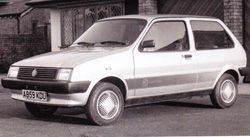
 Older people, and those with a historical interest, will recognize the title for this section from Winston Churchill’s memoirs.
Older people, and those with a historical interest, will recognize the title for this section from Winston Churchill’s memoirs.
It referred to the period of time when he was out of favour with the Government of the time and for him he was out in the cold. It is also apt for the 13 years between 1980 and 1993 during which there was no current production MG sports car, and in fact between 1980 and 1982 there was no MG car being made.
Against the background of the end of Midget and MGB production, the MG world had to endure the closure and ignominious dismantling of MG’s ancestral home at Abingdon. The well-meaning attempts of the time to continue MGB production also came to nothing and suddenly MG became just history.
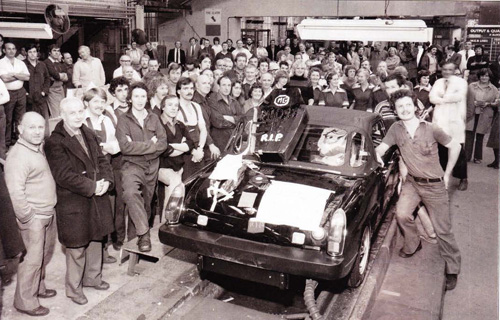
Then just two years later, in early 1982, British Leyland’s Austin Rover Division launched to an eager, but somewhat skeptical world, the new MG Metro 1300. This immediately polarized the MG fraternity into two distinct camps. Those who simply could not, or would not, accept that this was an MG, and those who looked deeper at the new car and assessed it on its merits.
The big problem for the MG Metro, which continued with the MG Maestro and MG Montego, was the simple fact that these cars had to carry the MG mantle on their own without the support of a parallel production MG sports car. This almost certainly blighted the reception and subsequent sales, as not only MG enthusiasts questioned whether these front-wheel-drive production saloons justified the MG treatment.
A simple analysis of previous MG saloons showed that in terms of engineering changes done specifically to the MG models, the MG Metro had undergone more than many previous MG saloons. The fact that the earlier saloons have a higher level of acceptability I put down to the simple fact that there were MG sports cars produced at the same time, and that the saloons were simply regarded as there to fill a niche.
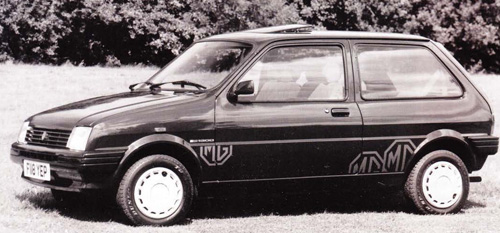
Motor magazine headed the first paragraph of their full road test of June 19, 1982 with, “Don’t let the so-called purists fool you. British Leyland’s new MG is an entertaining little sports saloon which is worthy of the name, and a practical and economical one into the bargain.” Now Motor were not renowned for mincing their words when it comes to road tests, and if the car was bad then they would have had no hesitation in saying so. The fact is that they didn’t, and went on to end their road test with: “British Leyland have another winner here which we greatly enjoyed.”
Indeed the car was a sales success and was joined at the 1982 Motor Show by a model that no one could claim was just a few trim bits and badges. This was of course the MG Metro Turbo, which was totally re-engineered with assistance from Lotus. This was a significantly faster car and one whose performance I had some experience of before the official launch. I was involved in some specific tyre testing and using MIRA facilities. One aspect involved driving flat out around the high-speed track with its steep banked curves. At this time I was in a Rover 3500 SD1 reaching speeds in excess of 130mph on the straights and losing eight to nine miles per hour on the banked curves. About half a lap ahead was a matt black Metro, which I had been reliably told, was a Turbo development car. For some considerable time we held these speeds and made no impression on the distance between this Metro and us – very impressive for the time!
British Leyland anticipated that the MG Metro would account for about 8,500 UK sales per annum; the fact that this was exceeded by a very significant margin caused a number of problems for the next new MG saloon, the MG Maestro.
The Miracle Maestro as it was dubbed was initially planned to be announced with a limited range of models. Of note was the fact that the performance versions were to be badged MG.
The sales success of the Metro caught BL by surprise and this forced a rethink of the model line-up for the forthcoming Maestro launch. Thus on March 1, 1983 the Maestro was launched to the world with an MG version, known as the MG Maestro 1600. The Maestro was a slight oddball from the start as it was aimed into the Escort/Astra/Golf class, yet had the dimensions more common with the Sierra/Cavalier size of car. As such it did not have quite the same performance as the XRi/SRi/GTi competition.
One well-remembered feature of the new MG Maestro was the green display digital dash with is connected trip computer and voice message system. The comedians of the time had a field day with jibes about the way in which Nicolette McKenzie’s voice was nagging male drivers. In reality, the clear numerical speed display and sensible voice messages of main system faults was a boon, even if the “please fasten your seat belts” message every time you switched on the ignition was a little tiresome.
The Montego launch in April 1984 followed the previous pattern with an MG Model being available from day one, and was of course the MG Montego EFi. This used a radically revised version of the 2-litre version of the O-series engine, fitted with what was then a very advanced Lucas engine management system, with microprocessor-controlled ignition and fuel injection.
Unlike the MG Metro and MG Maestro models before it, the MG Montego was aimed more up-market and in direct competition with the 1.8 litre SRi and CD Cavaliers, and 2.0 litre Sierra. It was a viable alternative to these, but still suffered from the British Leyland stigma, which of course was not helped by problems with the early MG Maestro 1600.
The MG Montego EFi carried on from the MG Maestro in having a very advanced multi-colour digital dash, trip computer and driver information system. Again the comedians took delight in ridiculing the nagging voice, but I have fond memories of one true incident where the voice could have saved much embarrassment.
The 1984 Motor Show at the National Exhibition Centre always needs careful police planning if things aren’t going to come to a complete standstill. Manufacturers often loan out new models for police use, and to obtain exposure of the new models.
One MG Montego was being used by two very senior officers who turned the voice unit volume right down. Had they not done so, they would not have suffered the breakdown in the middle of a very busy junction outside the NEC. Messages crackled across radio channels that the engine management system had failed along with all the derogatory comments that follow. The recovery arrives, switches on the ignition and the voice says, “The fuel level is low”! One can of petrol later and the car is up and running. The cartoons that appeared all over the place for weeks afterwards tell the rest of the story!
The Montego EFi was a competent saloon in its class, but did not particularly stand out from the crowd. However, on April 3, 1985, arrived an MG Montego that most certainly did. This was of course the MG Montego Turbo, which literally burst onto the scene with performance previously unheard of in this class. The development of the 2-litre O-series engine followed similar lines to the MG Metro Turbo, with the use of a specially prepared sealed SU carburettor. Unlike the Metro, there were no serious transmission weaknesses and so the turbocharger fitting included an intercooler, which allowed the engine to produce a market-leading 152bhp with an equally impressive 169ft lbs. of torque. By comparison the Saab Turbo was the accepted turbo road car of the period with 145bhp and more weight to move.
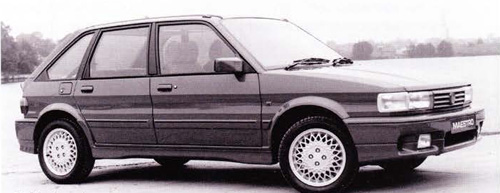
Quietly and with no fanfare, on a corner of the Austin Rover stand at the 1988 Motor Show at the NEC, was sitting a flame red MG Maestro with an aggressive body kit and Turbo badges. Here at last was the final piece of the jigsaw with a production MG Maestro Turbo. The phrase “better late than never” was muttered in many quarters and is quite true. On the positive side the delay had seen the need to involve Tickfords in the development and build. This led to the striking body kit, the use of the intercooled O-series straight out of the Montego Turbo, and the 1989 introduction 15-inch wheels and imperial sized ultra-low-profile performance tyres.
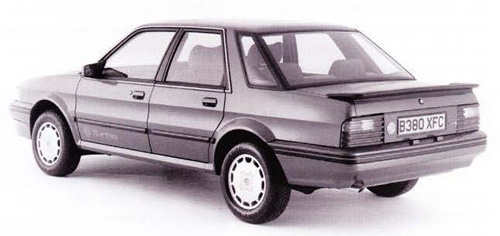
The MG Maestro Turbo became the pinnacle of the modern front-wheel-drive MG scene. It took the mantle of fastest production MG from the Montego Turbo, but later relinquished it to the MG RV8. It provided performance that completely trounced the market competition of the period and forced many a Maestro-baiting motoring journalist to eat humble pie. Road tests, although few, indicated that the cars were faster than the claimed performance, in that well under seven seconds was average to get to 60mph and a top speed of 130mph was easily achieved.
Whilst the production MGs were rolling from the production lines during the mid-1980s, Austin Rover decided to take a foray into international Group B rallying. In doing so they created one of the most famous MGs of all time, the MG Metro 6R4. This was a very unusual car not least for the decision to use a naturally aspirated three-litre V6 engine, rather than follow all the other major manufacturers with forced induction. It was just the beginning to develop its potential when the powers that be decided that this class was too powerful and they consequently banned it. This led to the 200 production and 20 evolution models of the car being sold to private owners to use mostly in other classes of rallying. Will Gollop with his championship-winning 700-plus bhp rallycross version demonstrated the potential of the car.
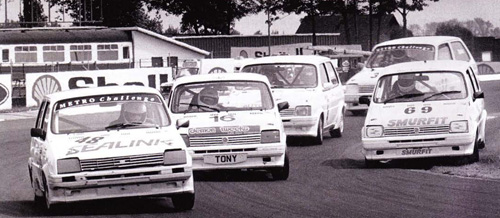

At the completely opposite end of the scale is the quite long-standing situation with value of FWD models. Apart from the Turbos, the FWD MGs have never really generated a wide and lasting enthusiast base. Generally there is a period of high enthusiasm, which then wanes, before another car takes its place.
The second-hand values of the cars became very depressed and the result was the rapid disappearance of the cars from daily use on our roads.
The one benefit of these rock-bottom residuals was that it allowed new young drivers the opportunity to own an MG. The clear lack of status meant that young MG FWD owners had a difficult enough time justifying their choice with their peers, then to find they were not accepted by MG people really put them out in the cold. History has shown that this opportunity was not grasped properly by the Club and some members went out of their way to actually alienate these poor lads and lasses. The formation of alternative clubs such as the MGM Group was one result of that. How much of a loss to the MG Car Club is impossible to assess, but a loss there certainly has been. I wonder whether we, the membership of the Club, will learn from this? I doubt it, as human activity shows the same mistakes being constantly repeated, but at least we should try.
Even so, the MG Car Club clearly embraced the FWD MGs, and still does, even if too many individuals within the Club did/do not. In the early 1908s dedicated enthusiasts of the MG Metro started Metro file Safety Fast! passing on all sorts of useful information for the growing number of owners in the MG Car Club. In fact new owners of the FWD MGs helped to increase Club membership, and we must also remember that the 1908s was the period when the hot hatch was king, and no volume manufacturer paid more than lip service to soft top sports cars. Once the MG Maestro and MG Montego were established, the Front Wheel Drive Register was born. This Register has always had a core of dedicated enthusiasts helping to support other owners. The biggest problem is that there were few enthusiast members who only own a FWD MG. The majority of MG Car Club FWD owners will also own another MG two-seater sports car and this tends to take the limelight.
 Roger Parkers’s attraction with MGs goes back to a boy in the early 1960s with older siblings owning MGs and culminating with him being able to convince his mother to buy an MG1300 in 1970 instead of a Morris, and benefitting from regularly driving it and later tuning it! He became a police officer in the Midlands in 1971 and had a very focused career in traffic-orientated matters, which included the development of the first UK unmarked police patrol cars with fully integrated video in the late 1980s and then the further development of this with Automatic Number Place Recognition (ANPR) with the first fully mobile system in the UK that saw him drawn onto a national ACPO (Association of Chief Police Officers) working party for the national introduction of ANPR technology. Roger retired from the police in 2001 when he took up a position with the MG Owners Club to provide members with technical advice, writing magazine features and general Club activities. Roger has owned his 1968 MGB since 1973, which he still has in a much-modified form and he and the car were pivotal in convincing the Rover management to progress with the Adder project, which became the MG RV8.
Roger Parkers’s attraction with MGs goes back to a boy in the early 1960s with older siblings owning MGs and culminating with him being able to convince his mother to buy an MG1300 in 1970 instead of a Morris, and benefitting from regularly driving it and later tuning it! He became a police officer in the Midlands in 1971 and had a very focused career in traffic-orientated matters, which included the development of the first UK unmarked police patrol cars with fully integrated video in the late 1980s and then the further development of this with Automatic Number Place Recognition (ANPR) with the first fully mobile system in the UK that saw him drawn onto a national ACPO (Association of Chief Police Officers) working party for the national introduction of ANPR technology. Roger retired from the police in 2001 when he took up a position with the MG Owners Club to provide members with technical advice, writing magazine features and general Club activities. Roger has owned his 1968 MGB since 1973, which he still has in a much-modified form and he and the car were pivotal in convincing the Rover management to progress with the Adder project, which became the MG RV8.
NAMGAR would like to thank Andy Knott, Editor, Safety Fast! for his kind permission to reproduce these articles.

